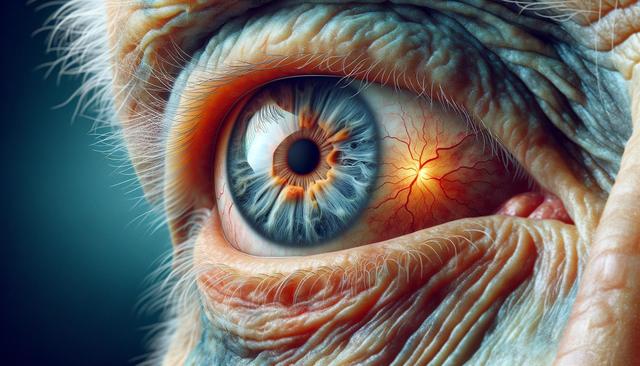Understanding Macular Degeneration and Its Forms
Macular degeneration, also known as age-related macular degeneration (AMD), affects the central portion of the retina called the macula. This area is crucial for sharp, central vision, which is necessary for activities like reading and driving. There are two main types of AMD: dry and wet. Dry AMD is more common and progresses slowly, involving gradual thinning of the macula. Wet AMD, though less common, is more severe and results from abnormal blood vessel growth under the retina, leading to leakage and rapid vision loss.
While the exact cause of AMD is not fully understood, several risk factors have been identified, including age, genetics, smoking, and diet. Recognizing the early symptoms, such as blurry vision or difficulty seeing in low light, can lead to earlier diagnosis and more effective treatment outcomes. Regular eye exams are essential, especially for individuals over the age of 50 or those with a family history of the condition.
Anti-VEGF Injections for Wet AMD
One of the most widely used and effective treatments for wet AMD involves anti-vascular endothelial growth factor (anti-VEGF) injections. These medications work by inhibiting the growth of abnormal blood vessels in the retina and reducing their tendency to leak. By controlling these underlying mechanisms, anti-VEGF injections help stabilize and in some cases improve vision.
Patients typically receive these injections directly into the eye at regular intervals, often beginning with monthly treatments followed by a customized schedule based on how the eye responds. Commonly used anti-VEGF agents include:
- Ranibizumab
- Aflibercept
- Bevacizumab (used off-label)
Although the idea of an injection in the eye may sound daunting, the procedure is generally well-tolerated with minimal discomfort. Side effects are rare but may include temporary eye irritation or increased pressure. Continued advancements in this area are leading to longer-lasting formulations and less frequent dosing schedules, improving convenience for patients.
Emerging Therapies and Clinical Trials
Research into new and innovative treatments for macular degeneration is ongoing. Several promising approaches are currently being investigated through clinical trials, offering hope for improved management of both dry and wet AMD. These include gene therapies, stem cell-based treatments, and long-acting drug delivery systems.
For dry AMD, which currently has fewer treatment options, some experimental therapies aim to slow the progression of geographic atrophy—a late stage of the disease. These therapies focus on targeting the complement system, a part of the immune system thought to play a role in macular damage. Examples of such treatments include:
- Complement inhibitors targeting specific proteins
- Gene therapies designed to correct genetic triggers
- Implantable devices for continuous drug release
Participation in clinical trials can be a valuable option for patients who have not responded well to standard treatments or are in the early stages of the disease. It’s important for patients to consult their eye care provider to evaluate eligibility and discuss potential benefits and risks of experimental therapies.
Lifestyle and Nutritional Interventions
While medical treatments play a vital role, lifestyle and dietary choices also significantly affect the progression of macular degeneration. Evidence suggests that certain nutrients and habits can help support eye health and potentially slow the advancement of AMD. The Age-Related Eye Disease Studies (AREDS and AREDS2) have identified specific supplements that may benefit individuals with intermediate or advanced AMD.
Recommended nutrients include:
- Vitamin C and E
- Zinc and copper
- Lutein and zeaxanthin
- Omega-3 fatty acids
In addition to supplements, a balanced diet rich in leafy greens, colorful fruits, and fish can provide natural sources of these beneficial nutrients. Avoiding smoking, maintaining a healthy weight, and managing cardiovascular health are also key steps in preserving vision. Physical activity and protecting the eyes from excessive sunlight with UV-blocking sunglasses can further support overall eye wellness.
Monitoring and Long-term Management
Managing macular degeneration is an ongoing process that requires consistent monitoring and collaboration with an eye care professional. Regular check-ups allow for early detection of changes in vision and the opportunity to adjust treatment plans as needed. Technology such as optical coherence tomography (OCT) and visual acuity tests help track disease progression and treatment effectiveness.
Patients are often advised to use tools like the Amsler grid at home to monitor their vision between appointments. Any noticeable changes, such as distortion or dark spots in central vision, should be reported promptly. Creating a structured care routine that includes:
- Adhering to treatment schedules
- Taking prescribed supplements
- Following dietary recommendations
- Staying informed about new treatment options
can empower individuals to take an active role in their eye health. Support groups and educational resources may also provide emotional encouragement and practical tips for daily living with vision changes.
Conclusion: Navigating Macular Degeneration with Confidence
Although macular degeneration presents significant challenges, understanding the available treatment options and lifestyle strategies can make a meaningful difference. From anti-VEGF injections for wet AMD to emerging therapies and nutritional support, patients have access to a growing range of tools for preserving vision. Regular eye exams, early detection, and proactive management are key to maintaining quality of life. Working closely with healthcare providers ensures a personalized approach, helping individuals make informed decisions and navigate their journey with confidence.




Leave a Reply